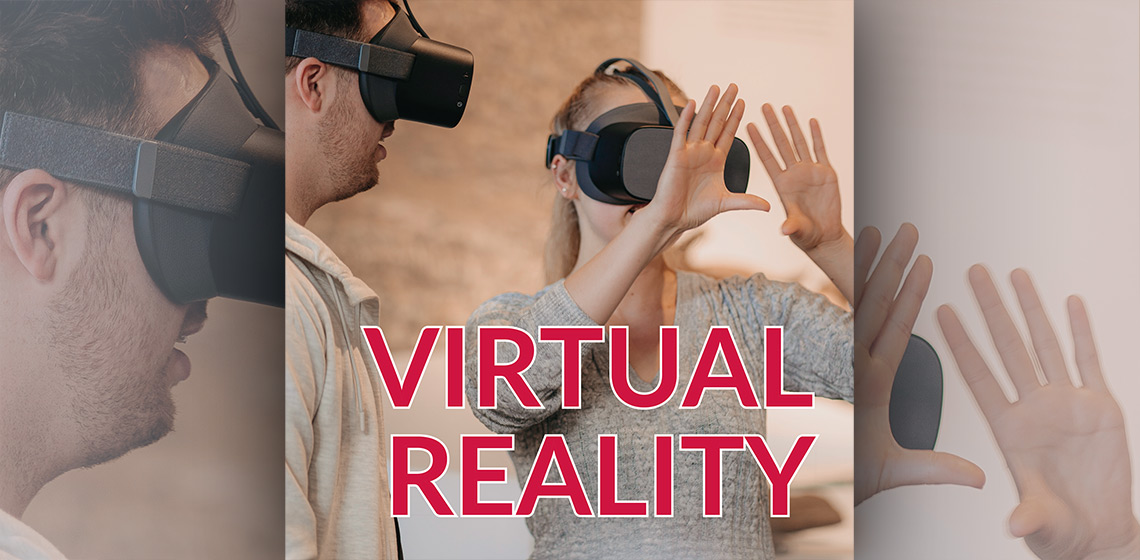The content is published under a Creative Commons Attribution Non-Commercial 4.0 License.
Unreviewed Mixed Matters Article:
Virtual Reality – 1 Project - 13 Museums

Visitors in 13 museums in the rural area around the city of Lüneburg (Lower Saxonia, Germany) can now discover different aspects of the interrelationship between man and nature within a virtual world. Six themes or titles guide through to whole story, like nature means threat, or nature means work or beauty, etc. symbolised by a silhouette.
Every museum could contribute to the different themes with their own collection and museal work. For example, the Archaeological Centre Hitzacker presents the archaeological finds and its interpretation of a bronze age settlement. We show harvesting in our crop field or working with a vertical weaving frame. Coordinator was the largest museum in the region, the Museum Lüneburg, using the already existing network of museums in this area. This cooperation made it possible to be the first Archaeological Open-Air-Museum (AOAM) in Lower Saxonia offering VR-Glasses. The whole project took three years’ time and was financed by an European grant (Europäischer Sozialfond) of 311.689,75 € plus 40 % contribution of the Museum Lüneburg.
In many workshops we developed the stories behind the themes together, so that every museum could contribute with their exhibitions and specific themes to the project. Once the screenplay was - more or less – fixed, a media company, twinC, transferred the ideas into an VR-APP. In videos and pictures visitors can now travel through a historic Dutch Mill or experience the work of a Harvester, dive into the world of wood ants or fly up the outside of a chimney of a clay-brick manufacture while sitting comfortably in a chair in one of the museums. Each partner owns one of the VR-Glasses and can provide its visitors with this new educational system for free additionally to the traditional presentation. Every visitor can travel through all worlds and themes in every museum, so the public awareness also rises for all project partners.
The new technique claimed a lot of new thinking. In the beginning we had to decide what we would like to contribute to which title. Once we figured it out we had to put it together to a story. It could only be little information transferred from each partner museum, so one had to choose carefully. Then the translation form paperwork to video had to be done. Therefore, we had a big help from our media partner TwinC. While making films in a 360° angle everyone and everything had to leave “stage”, because everything “behind” (actually there is no behind) the camera was seen in the film. Information had to be very roughly told for only a short film with few explanations was used. So, we had to learn a vocal and a visual part to explain the information in short terms, just like a theatrical performance. Once everything was done every film of every partner was put together to be seen in our “Virtual Reality”. First the visitor will see a drawing landscape in every theme where they can find the different museums-themes – and off they go! All together it will take a very long time to travel in each “world” (about 2 hours – I have never managed it yet to watch all sequences in once). And this might be one problem. We have only one VR-Instrument, so only one person at a time can use it while the others have to wait. The glasses are very damageable, we are very curious how long they will last. They do not like direct sun light, can be easily broken and the lenses should not be sanitised. While we do not have an in-door-museum visitors have to borrow the VR glasses, walk into one of our long-houses, sit down and use it on their own. That means also, that there will be no personal help while using the VR-glasses. This are the first experiences we have already made during the first rehearses.
We are now looking forward to the final start at the 07th of August 2022.
All together it was a time consuming, inspiring and very interesting work. Colleagues of all the different museums, from exhibitions about a stone age necropolis to museum providing information about fishermen´s work in the river Elbe, get to know each other much better, personally and about the museums work. If this might work it would be very interesting to start a project for only our open air museum – a journey back into 2.000 before Christ.
Keywords
Country
- Germany

